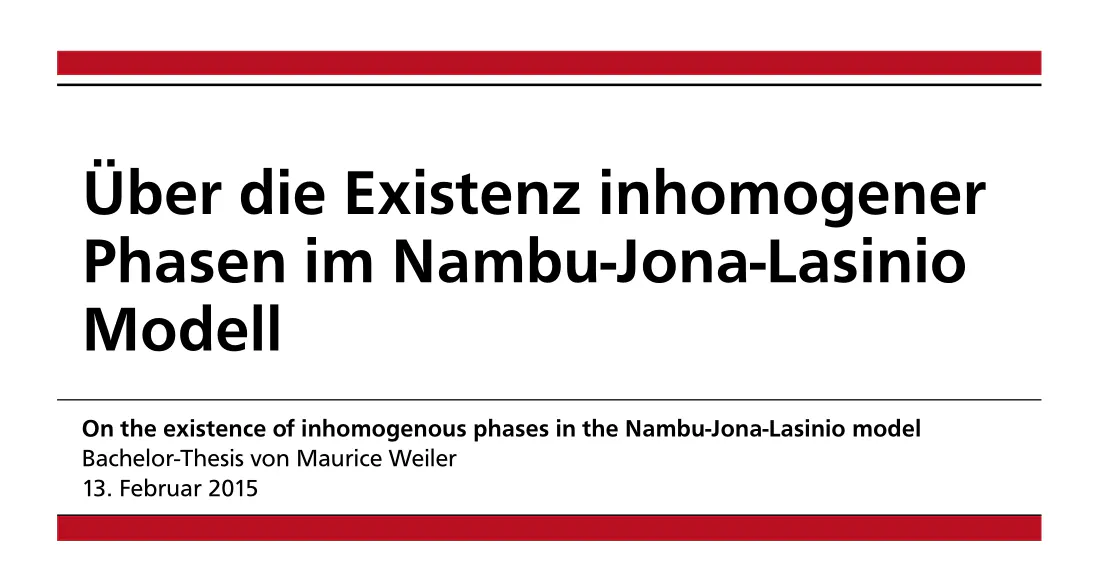
Abstract
In this thesis we investigate spontaneous chiral symmetry breaking in strongly interacting matter in the limit of a large number of colours. The Nambu-Jona-Lasinio model is used as an effective low-energy-model of quantum chromodynamics. As a function of temperature and chemical potential we find the emergence of a quark-antiquark condensate associated with chiral symmetry breaking. For our explicit studies, it is necessary to choose an ansatz for this condensate. A homogeneous choice leads to a phase diagram with a second order phase transition between the chirally symmetric and the spontaneously broken phase. Depending on the cutoff scale the transition line between these phases can change into a transition of first order at a critical point. For an inhomogeneous ansatz we choose a chiral density wave. In order to calculate the corresponding phase diagram, we make use of a so called „fermion doubling trick“. This allows to prove the existence of an inhomogenous phase in the Nambu-Jona-Lasinio model.